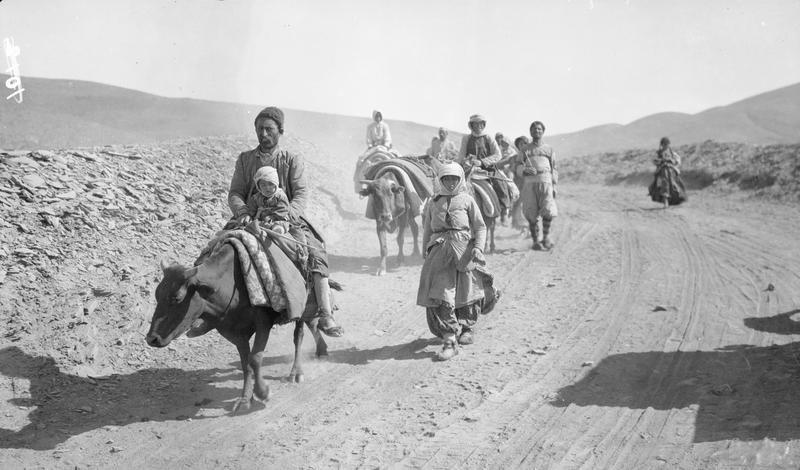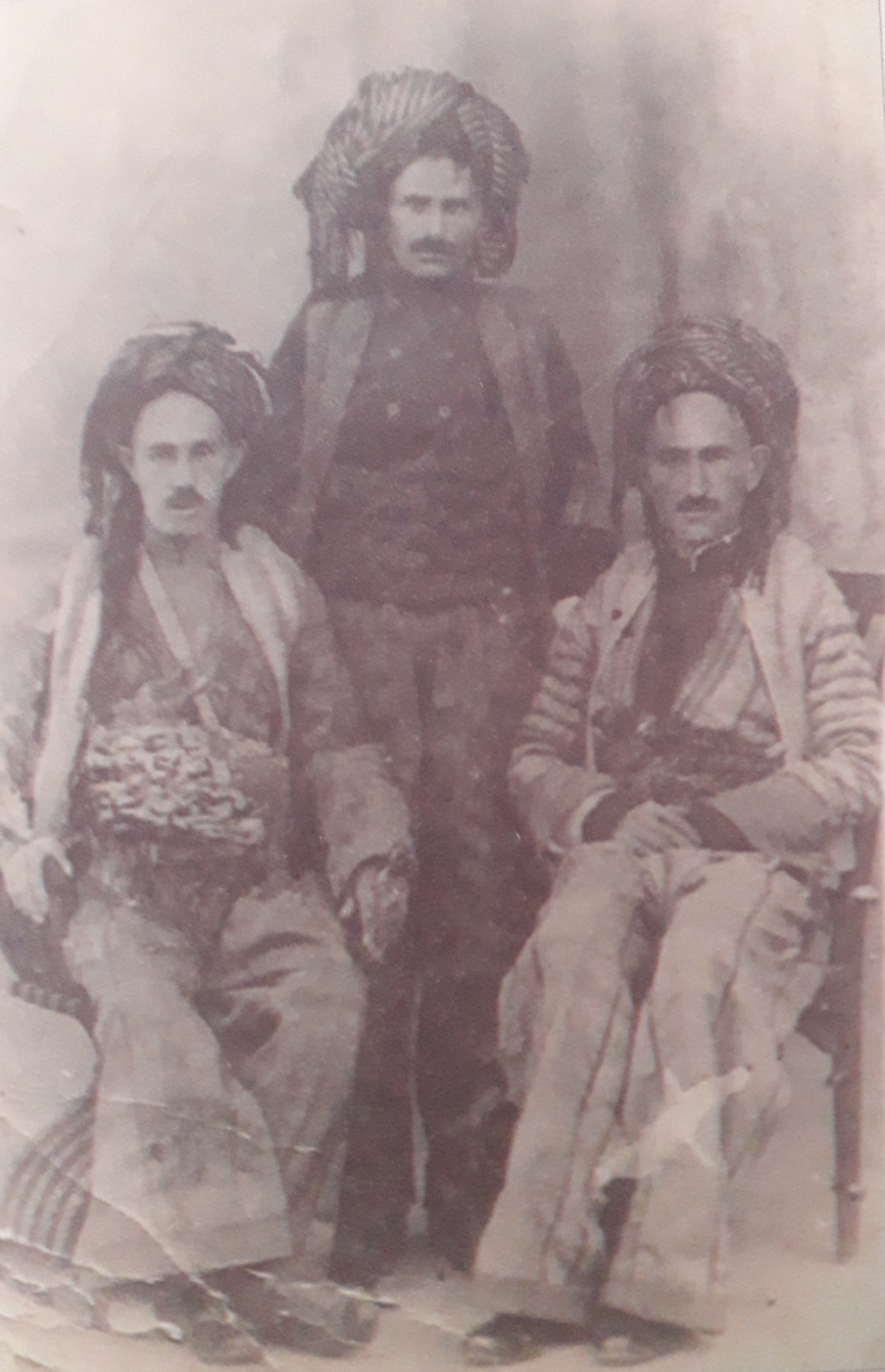|
Targavar Rural District
Targavar Rural District ( fa, دهستان ترگور, syr, ܬܪܓܘܪ, Targawar) is a rural district (''dehestan'') in Silvaneh District, Urmia County, West Azerbaijan Province, Iran. At the 2006 census, its population was 7,893, in 1,344 families. The rural district has 26 villages. The district was home to a significant Assyrian population before the Assyrian genocide, but is mostly populated by Herki Kurds today. See also * Emirate of Bradost References See also * Assyrian genocide * List of Assyrian settlements * Assyrian homeland The Assyrian homeland, Assyria ( syc, ܐܬܘܪ, Āṯūr or syc, ܒܝܬ ܢܗܪ̈ܝܢ, Bêth Nahrin) refers to the homeland of the Assyrian people within which Assyrian civilisation developed, located in their indigenous Upper Mesopotamia. T ... * Margawar Rural Districts of West Azerbaijan Province Urmia County Places of the Assyrian genocide {{Urmia-geo-stub Kurdish settlements in West Azerbaijan Province ... [...More Info...] [...Related Items...] OR: [Wikipedia] [Google] [Baidu] |
Rural Districts Of Iran
Dehestan ( fa, دهستان, lit=rural district, also Romanized as "dehestān") is a type of administrative division of Iran. It is above the village and under the bakhsh A ( fa, بخش, also romanized as ) is a third-level administrative division of Iran. While sometimes translated as "county," it is more accurately translated as "district," similar to a township in the United States or a district of En .... , there were 2,400 dehestans in Iran. References Subdivisions of Iran Types of administrative division {{Iran-gov-stub ... [...More Info...] [...Related Items...] OR: [Wikipedia] [Google] [Baidu] |
Assyrian Genocide
The Sayfo or the Seyfo (; see below), also known as the Assyrian genocide, was the mass slaughter and deportation of Assyrian / Syriac Christians in southeastern Anatolia and Persia's Azerbaijan province by Ottoman forces and some Kurdish tribes during World War I. The Assyrians were divided into mutually antagonistic churches, including the Syriac Orthodox Church, the Church of the East, and the Chaldean Catholic Church. Before World War I, they lived in mountainous and remote areas of the Ottoman Empire (some of which were effectively stateless). The empire's nineteenth-century centralization efforts led to increased violence and danger for the Assyrians. Mass killing of Assyrian civilians began during the Ottoman occupation of Azerbaijan from January to May 1915, during which massacres were committed by Ottoman forces and pro-Ottoman Kurds. In Bitlis province, Ottoman troops returning from Persia joined local Kurdish tribes to massacre the local Christian population ( ... [...More Info...] [...Related Items...] OR: [Wikipedia] [Google] [Baidu] |
Rural Districts Of West Azerbaijan Province
In general, a rural area or a countryside is a geographic area that is located outside towns and cities. Typical rural areas have a low population density and small settlements. Agricultural areas and areas with forestry typically are described as rural. Different countries have varying definitions of ''rural'' for statistical and administrative purposes. In rural areas, because of their unique economic and social dynamics, and relationship to land-based industry such as agriculture, forestry and resource extraction, the economics are very different from cities and can be subject to boom and bust cycles and vulnerability to extreme weather or natural disasters, such as droughts. These dynamics alongside larger economic forces encouraging to urbanization have led to significant demographic declines, called rural flight, where economic incentives encourage younger populations to go to cities for education and access to jobs, leaving older, less educated and less wealthy populati ... [...More Info...] [...Related Items...] OR: [Wikipedia] [Google] [Baidu] |
Margawar
Margavar Rural District ( fa, دهستان مرگور, ku, Mirgewer) is a rural district (''dehestan'') in Silvaneh District, Urmia County, West Azerbaijan Province, Iran. At the 2006 census, its population was 34,862, in 6,012 families. The rural district has 53 villages. According to Harry P. Packard of the Board of Foreign Missions of the Presbyterian Church, the districts of Targawar, Mergawar, and Dasht were destroyed by Turks and Kurds during the Assyrian genocide in events that gave rise to the Assyrian independence movement. Few Assyrians remain in Margavar and the district is mostly populated by Kurds. See also * Emirate of Bradost References See also * Assyrian homeland * Nochiya Tribe * Targawar Targavar Rural District ( fa, دهستان ترگور, syr, ܬܪܓܘܪ, Targawar) is a rural district (''dehestan'') in Silvaneh District, Urmia County, West Azerbaijan Province, Iran. At the 2006 census, its population was 7,893, in 1,344 fami ... Rural Di ... [...More Info...] [...Related Items...] OR: [Wikipedia] [Google] [Baidu] |
Assyrian Homeland
The Assyrian homeland, Assyria ( syc, ܐܬܘܪ, Āṯūr or syc, ܒܝܬ ܢܗܪ̈ܝܢ, Bêth Nahrin) refers to the homeland of the Assyrian people within which Assyrian civilisation developed, located in their indigenous Upper Mesopotamia. The territory that forms the Assyrian homeland is, similarly to the rest of Mesopotamia, currently divided between present-day Iraq, Turkey, Iran and Syria. In Iran, the Urmia Plain forms a thin margin of the ancestral Assyrian homeland in the north-west, and the only section of the Assyrian homeland beyond the Mesopotamian region. The majority of Assyrians in Iran currently reside in the capital city, Tehran. The Assyrians are indigenous Mesopotamians, descended from the Akkadians and Sumerians, who developed independent civilisation in the city of Assur on the eastern border of northern Mesopotamia. The territory that would encompass the Assyrian homeland however was divided through the centre by the Tigris River, with their indigenous Me ... [...More Info...] [...Related Items...] OR: [Wikipedia] [Google] [Baidu] |
List Of Assyrian Settlements
The following is a list of historical and contemporary Assyrian settlements in the Middle East. This list includes settlements of Assyrians from Southeastern Turkey who left their indigenous tribal districts in Hakkari (or the historical Hakkari region), Sirnak and Mardin province due to torment, violence and displacement by Ottomans and Kurds in the First World War. Many Assyrians from Urmia, Iran were also affected and as such have emigrated and settled in other towns. Resettling again occurred during the Simele massacre in northern Iraq, perpetrated by the Iraqi military coup in the 1930s, with many fleeing to northeastern Syria. Most modern resettlement is located in Iraq, Syria and Iran in the cities of Baghdad, Habbaniyah, Kirkuk, Duhok, Al-Hasakah, Tehran and Damascus. Few Assyrian settlements exist in Turkey today and also in the Caucasus. The exodus to the cities or towns of these aforementioned countries occurred between late 1910s and 1930s. After the Iraq War in ... [...More Info...] [...Related Items...] OR: [Wikipedia] [Google] [Baidu] |
Emirate Of Bradost
An emirate is a territory ruled by an emir, a title used by monarchs or high officeholders in the Muslim world. From a historical point of view, an emirate is a political-religious unit smaller than a caliphate. It can be considered equivalent to a principality in non-Muslim contexts. Currently in the world, there are two emirates that are independent states (Kuwait and Qatar), and a state that consists of a federation of seven emirates, the United Arab Emirates. The unrecognized Taliban state in Afghanistan is also styled as an emirate. A great number of previously independent emirates around the world are now part of larger states, as can be seen in Nigeria. Etymology Etymologically, emirate or amirate ( ' plural: ' is the quality, dignity, office, or territorial competence of any emir (prince, commander, governor, etc.). In English, the term is pronounced or in British English and or in American English. Types Monarchies The United Arab Emirates is a federal state ... [...More Info...] [...Related Items...] OR: [Wikipedia] [Google] [Baidu] |
Kurds
ug:كۇردلار Kurds ( ku, کورد ,Kurd, italic=yes, rtl=yes) or Kurdish people are an Iranian ethnic group native to the mountainous region of Kurdistan in Western Asia, which spans southeastern Turkey, northwestern Iran, northern Iraq, and northern Syria. There are exclaves of Kurds in Central Anatolia, Khorasan, and the Caucasus, as well as significant Kurdish diaspora communities in the cities of western Turkey (in particular Istanbul) and Western Europe (primarily in Germany). The Kurdish population is estimated to be between 30 and 45 million. Kurds speak the Kurdish languages and the Zaza–Gorani languages, which belong to the Western Iranian branch of the Iranian languages. After World War I and the defeat of the Ottoman Empire, the victorious Western allies made provision for a Kurdish state in the 1920 Treaty of Sèvres. However, that promise was broken three years later, when the Treaty of Lausanne set the boundaries of modern Turkey and made no s ... [...More Info...] [...Related Items...] OR: [Wikipedia] [Google] [Baidu] |
Herki
Herki, also spelled Harki () is a large tribe in Kurdistan. The largest part of this tribe live in Iraqi Kurdistan and a significant number live in Iranian Kurdistan. They are also found in Northern Kurdistan. Sub-tribes The Herkis are divided in three sub-tribes: Menda, Sida and Serhati. History According to tradition, the Herkis descend from a man named Babekr Agha. There are claims, however, like that of Dr.Zirar Siddiq Tewfiq, author of the book ''The Kurdish Tribes and Tribal Leaders in the Middle Ages,'' believes that the Harkis were present in the middle ages, possibly as 'Arji'. It seems that the Arji dwelt around Amadiya during the Abbasid period. An attested individual who belonged to the Arji is a man named Baw Al-Arji, who was one of Abu'l-Haija bin Abdullah Al-Hakkari's men, a contemporary of Imad al-Din Zengi. However, this is unlikely, considering the tribe's family tree from the founder till recent times does not go that far into the past. , in his masterpiece , ... [...More Info...] [...Related Items...] OR: [Wikipedia] [Google] [Baidu] |
List Of Sovereign States
The following is a list providing an overview of sovereign states around the world with information on their status and recognition of their sovereignty. The 206 listed states can be divided into three categories based on membership within the United Nations System: 193 UN member states, 2 UN General Assembly non-member observer states, and 11 other states. The ''sovereignty dispute'' column indicates states having undisputed sovereignty (188 states, of which there are 187 UN member states and 1 UN General Assembly non-member observer state), states having disputed sovereignty (16 states, of which there are 6 UN member states, 1 UN General Assembly non-member observer state, and 9 de facto states), and states having a special political status (2 states, both in free association with New Zealand). Compiling a list such as this can be a complicated and controversial process, as there is no definition that is binding on all the members of the community of nations concerni ... [...More Info...] [...Related Items...] OR: [Wikipedia] [Google] [Baidu] |
Iran
Iran, officially the Islamic Republic of Iran, and also called Persia, is a country located in Western Asia. It is bordered by Iraq and Turkey to the west, by Azerbaijan and Armenia to the northwest, by the Caspian Sea and Turkmenistan to the north, by Afghanistan and Pakistan to the east, and by the Gulf of Oman and the Persian Gulf to the south. It covers an area of , making it the 17th-largest country. Iran has a population of 86 million, making it the 17th-most populous country in the world, and the second-largest in the Middle East. Its largest cities, in descending order, are the capital Tehran, Mashhad, Isfahan, Karaj, Shiraz, and Tabriz. The country is home to one of the world's oldest civilizations, beginning with the formation of the Elamite kingdoms in the fourth millennium BC. It was first unified by the Medes, an ancient Iranian people, in the seventh century BC, and reached its territorial height in the sixth century BC, when Cyrus the Great fo ... [...More Info...] [...Related Items...] OR: [Wikipedia] [Google] [Baidu] |



.jpg)

